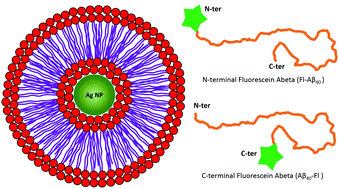Fluorescence quenching by lipid encased nanoparticles shows that amyloid-β has a preferred orientation in the membrane†
Abstract
Short range plasmonic fields around a nanoparticle can modulate fluorescence or Raman processes. In lipid encased nanoparticles, this can potentially measure the relative depths of different parts of a membrane protein from the surface. We employ this technique to discover that membrane inserted amyloid-β oligomers have a preferred molecular orientation.

- This article is part of the themed collection: Amyloid Aggregation


 Please wait while we load your content...
Please wait while we load your content...